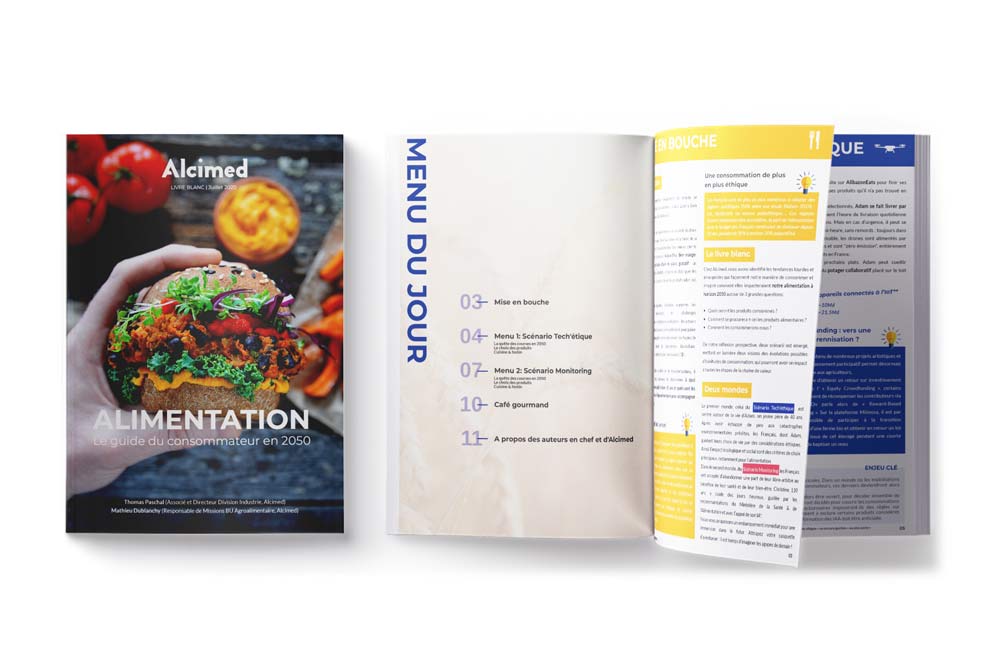All political and institutional bodies and associations agree that the future of world nutrition will be based on a sustainable model, as the current model is not viable. The term sustainability is difficult to define but it is commonly accepted that it includes the following stakes: environmental, nutritional, social and economic. Fermentation in food processing as a natural process tick most of the boxes of the sustainable food model. Dating back to Neolithic times, it is used worldwide for the transformation of everyday products, such as bread or wine. It can be used to different extends in the manufacturing process of a product: to produce metabolites (e.g. vitamins, proteins, flavors, coloring), to ferment ingredients (e.g. fermented soy, almonds or lentils) or the whole product (e.g. sauerkraut, fermented vegetables in jars). In total, fermented products worldwide represent between 5 and 40% of the daily food intake [1], even if few consumers are aware of their existence. Fermentation in the food industry is a field in constant evolution, between tradition and innovation, which represents a real asset in the nutrition model of the future. In this article, Alcimed explores the role of fermentation as a sustainable process in our future food supply, and therefore unavoidable in the innovation strategies of food manufacturers.
1. Fermentation in the food industry: a natural process and a more environmentally friendly alternative
Fermentation will play an important role in the coming years, especially in the production of metabolites of interest. Currently produced by a chemical process, extracted from nature or generated thanks to intensive agriculture (breeding for example), these metabolites have a strong impact on the ecosystem. Fermentation represents a sustainable production alternative.
This is particularly true for proteins, for example. According to the World Economic Forum, demand will grow by 100% between now and 2050 and it will not be possible to satisfy this demand with animal proteins. A plant-based alternative can be developed through fermentation, whether it is microbial, biomass or precision fermentation. More and more players are positioning themselves on the subject, such as Quorn’s, which produces meatless nuggets and fillets, and Clara Food, which develops egg proteins through fermentation. According to the RethinkX report, the demand for cow-based products will decrease by 70% by 2030, leaving a large market share to alternative protein players [2].
Learn more about the plant proteins market and opportunities >
Other metabolites, such as food flavors and colors, could also be cited as examples, as well as ingredients that, once fermented, have a texture similar to animal-derived ingredients (e.g., yogurt and vegetable alternatives to yogurt).
But the most important thing to remember is that fermentation is ecologically very interesting compared to other production alternatives. It is therefore a great opportunity to be seized and integrated in the next innovation strategies, given the recent development of a “planet score” for food products.
2. Fermentation in the food industry: a growing economic opportunity
The fermentation market is expected to grow significantly in the coming years: +6% CAGR from 2020 to 2027 to reach USD $875.21 billion by 2027 [3]. Indeed, there is a growing demand from consumers and more and more players are investing in the fermentation market. Different strategies exist, either they buy companies in the sector (e.g. PepsiCo and Coca Cola have both bought kombucha companies), or they rely on their internal expertise to develop fermented plant products (e.g. Danone, Bel). These strategies can be combined.
To date, the dairy analog market is growing rapidly and the biggest leaders in the sector have positioned themselves on the subject. However, there are still many unexplored areas of fermentation, such as fermented vegetables, exotic fermented products, fermented fruit juices or alternative ingredients (e.g. gluten-free pasta made from legumes).
3. Fermentation: a traditional and trendy process reflecting a commitment to ecology and solidarity
Fermentation is part of society’s practices in two ways. It is a traditional and cultural know-how, particularly present in Asian and African countries, which can allow consumers to live new experiences.
More recently, it has also become a way for society to reclaim its food and promote circular economy. Indeed, fermentation can be easily done on a small scale, by consumers within their home. This gives them a simple solution to reduce their food waste by increasing the shelf life of their fruits and vegetables. This change in practice can be supported by the manufacturer, through impactful communication that will educate the consumer on sustainable food, and through products that facilitate DIY (Do It Yourself). Within the framework of a circular economy, fermentation can also be used to valorize all the vegetable and fruit by-products of an industry. Ingredients can also be sourced entirely locally.
In short, fermentation gives food manufacturers the opportunity to prove their ecological commitment to their consumers by supporting them in their desire to consume in a sustainable and environmentally friendly manner.
4. Fermentation: an interesting nutritional aspect
Fermentation is often associated with interesting nutritional benefits. In the case of fermented ingredients, it can improve the bioavailability of minerals present, for example. It can also remove undesirable anti-nutritional factors. These benefits are also often associated with the digestive and intestinal ecosystem, particularly through the use of probiotics in certain products.
However, scientific research still needs to be conducted on the subject before these nutritional benefits can be legally claimed.
In summary, what are the key challenges for fermentation in the food industry?
Fermentation is a key element of tomorrow’s nutrition model and represents a great opportunity for innovation. Indeed, it provides a solution to the following challenges:
- Innovate thanks to an entirely natural process, without impact on the environment, which allows, among other things, the improvement of the conservation of sensitive products such as fruits and vegetables.
- Improve the nutritional qualities of a product, even if research work remains to be done in order to legally claim it.
- Create new sensory experiences (taste, texture, smell, color) thanks to traditional exotic products and to accompany the consumer towards a reappropriation of his food.
- Succeed in diversifying and innovating by integrating a rapidly expanding market.
However, there are challenges to be solved in order to implement an innovation strategy that includes fermentation:
- At the microbiological level: selecting the right microorganisms for fermentation
- At the technological level: develop fermentative processes
- At the nutritional level: study the effects and benefits of fermentation
- At the market level (consumer demand and trends): know how to position yourself in this complex market
- At the regulatory level: knowing what strains and claims can be allowed, etc.
And you, what are you waiting for to explore the fermentation market? Alcimed can help you overcome these challenges! Together, let’s explore your uncharted territories in this innovative market, while identifying market opportunities for you, and for our planet!
About the author,
Gaëlle, Consultant in Alcimed’s Life Science team in France
[1] Mohanta Y. et al, 2016. 22 Fermented Foods in Inida : diversity and biotechnological prospects. Accessible sur :
[2] RethinkX, 2019. Rethinking Food and Agriculture 2020-2030.
[3] Emergen Research, 2020. Fermented Food and Ingredients Market By Food Type (Fermented Dairy Products, Fermented Beverages), By Ingredient Type (Organic acids, Amino acids, Industrial Enzymes), By Distribution Channel (Online stores, Supermarkets), Forecasts to 2027.



